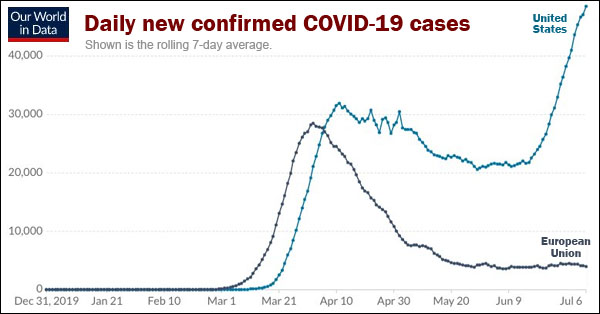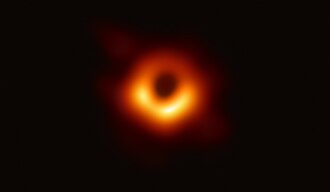
Yesterday the 2020 Nobel Prizes for Physiology/Medicine were announced. This year, three scientists who contributed to the discovery of Hepatitis C virus shared the award to equal parts. Harvey J. Alter, born 1935 in New York worked at the NIH Bethesda, Michael Houghton, born in 1949 in the UK works at the University of Alberta and Charles M. Rice, born 1952 in Sacramento, CA is researcher at the Rockefeller University in New York. The success of anglo-american bio-medical basic research is again reflected by the decisions of the Nobel Price committee, and there is little reason for doubts about the justifiction of their votes. It is, by the way, also reflected by the number of high-class publications, patents, discovery of novel therapies.
What is deeply disturbing, though, is the fact that despite the high level of basic research in medicine and biology in the US, their record of fighting the SARS-CoV2 pandemic is desastrous. Whereas the US makes up only 4% of the world population, it is responsible for about 20% of all SARS-CoV2 infections and the same percentage of coronavirus fatalities (as of today, the record of deaths shows 210.195 in the USA and 1.044.311 worldwide). During the last 10 month, 1 out of 1522 Americans died of the virus, as compared to "only" 1 out of 7469 people worldwide. The comparison becomes even more weired if you compare the death rate in the US with some countries which, despite limitted ressources for research, managed the corona-pandemic in much more planned and rational way. This is the Top-10 list of countries which achieved the lowest numbers of lost lives (relative to the population size):
CONTRY CONFIRMED DEATH DUE TO SARS-CoV2 (per population)
Taiwan 1 out of 3.371.423
Vietnam 1 out of 2.728.571
China (PR) 1 out of 295.421
Singapore 1 out of 211.111
South Korea 1 out of 122.275
Cuba 1 out of 91.057
Greece 1 out of 25.659
Finnland 1 out of 15.896
Denmark 1 out of 8.842
Germany 1 out of 8.583
What makes these numbers even more confusing, and puts the poor record of the US death toll in an even worse light is the fact that the East-Asian countries like China, South Korea or Singapore were among the first confronted with the virus outbreak. In the US, the infectious spread started almost 6 weeks later, therefore the authorities theoretical had a huge advantage of preparing the right measures of preventing the spread. But little benefit was gained from this natural advantage. The risk of dying of SARS-CoV2 in the US is about 200 times higher than in any of the East_Asian countries. And it is not a different population structure that can be blamed for this: All these countries and not agricultural any more, but dominated by large urban settlements and people working and big enterprises.
Some scientists suspect that certain genetic variants in the genome of East-Asians confer a protective effect against a severe SARS-CoV2 infection. Even taking this into account, one than wonders why countries like Cuba, Greece, Finnland or Denmark, which have a very similar population genetics as the US, still show an 6 to 60 fold lower risk to dye from the virus than the US. The idea of a protective genetic variant among Asian people is further questioned considering that US americans with Asian origin are not less likely to develop a severe or fatal course after infection.
Some speculate that the low rate of fatal outcomes in East-Asian countries might be attributed to a baseline presence of cross-reactive immunity from a preseding infection with other, more common corona-virus variants earlier in life. If this is true, than at least the low death rate in Greece or Cuba must have other, more obvious reasons.
If you look on the bottom end of the rank list, where countries with the worst records of SARS-CoV2 fatalities group, you find that the US is in prominent company:
CONTRY CONFIRMED DEATH DUE TO SARS-CoV2 (per population)
Israel 1 out of 5160
France 1 out of 3073
United Kingdom 1 out of 1563
USA 1 out of 1522
Brazil 1 out of 1444
And except for Brazil, which is currently run by a government blinded by complete ignorance, the other for candidates in this sad group also have one thing in common:
Theese are the nations with the highest number of Nobel Price winners per capita for Medicine. Strange co-incidence ?? It just shows a crying discrepancy between the worldwide spendings for life science basic research and the achievements in our knowledge on the one side and the poor impact it has in the political handling of a mayor health challenge such as the coronavirus pandemic.






